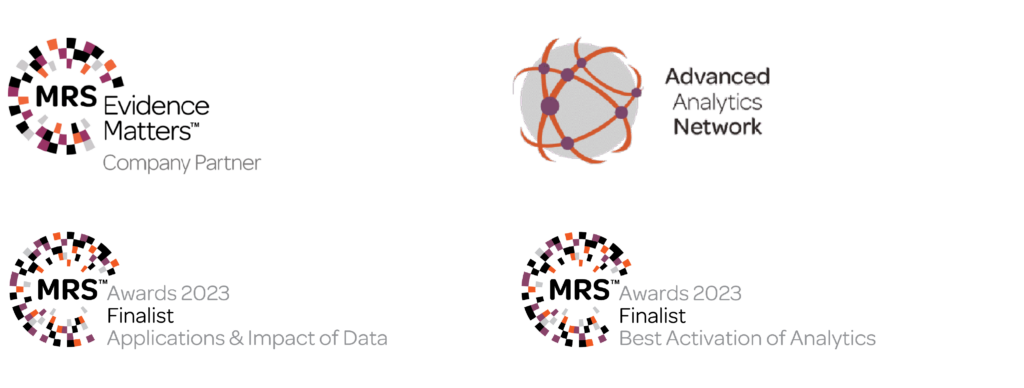
In the second blog of our AI series, Paul Jackson, our Managing Director, discusses how AI can be leveraged to tackle real client challenges and the advantages of building custom AI toolkits.
If you missed our last blog post ‘Our journey to becoming pioneers in AI-driven strategy’ you can read it here. Paul Jackson kicked off the conversation on STRAT7’s use of generative AI in our strategy consulting work. We explored the technology’s potential to enhance client solutions and discussed some of the key considerations for responsible AI use, like ensuring quality, accuracy, and ethics.
So let’s get into how to design AI solutions for real-world challenges…
The starting point is always the client challenge
At STRAT7, we’re not interested in using AI for the sake of AI. This might sound obvious, but many companies fall into the trap of implementing AI solutions without a clear purpose, leading to underwhelming or even inaccurate outcomes.
We’re focused on using AI to solve real problems and deliver tangible benefits for our clients. That’s why we always start with understanding their specific challenges and needs.
For example, clients may ask…
- How can we improve our efficiency and speed of delivery, without compromising on quality or depth?
- How can we deliver better solutions and recommendations, that are more creative, relevant, and impactful?
- How can we speak to our clients’ customers in more engaging ways?
- How can we understand customers in their own language, to improve customer centricity and help our clients have competitive advantage?
Only then – once we have a good handle on the client issue – will we design and build AI solutions that deliver on those needs. Not the other way around. And because we are methodology agnostic, we will often look to draw conclusions from mixed methodologies and multiple sources.
Revealing new, disruptive strategic insights
Quite often the answers to business questions are already out there. Our job is to find and unlock this data – be it survey data, image, audio, video inputs, documents and call transcripts, or data in the public domain (public reviews, social media, blogs, forums).
That’s why we leverage subscriptions, APIs and bespoke web-scraping to collect our own proprietary data, an approach that allows us to shape customer strategies and create AI solutions that harness this data’s full potential.
We also use AI to reveal fresh perspectives when we feel the answers would be better unearthed from speaking directly to customers. For example, through bespoke tools like discussion rooms, larger scale qual, imagery, audio, video via WhatsApp, we can engage with consumers in more exciting and nuanced ways. And thanks to AI, we are now able to synthesize, structure and deliver rich consumer insights from multiple sources in far more effective ways, on a significantly larger scale.

Out of the box AI solutions don’t cut it
Out of the box AI solutions can be appealing on the surface, offering a seemingly more straightforward solution. However, a word of caution – we’ve found that these kinds of solutions struggle to understand and answer business questions, often falling short of the mark.
Here’s an example – marked in bold are the things the generative AI got wrong, including the category our client was in!
If it can’t even understand the challenge, how can it provide a reliable answer? Our strat7GPT and bespoke AI solutions have been finessed around understanding client challenges and answering in a robust and accurate way.
Context is key
As we mentioned in the previous blog, whilst generative AI provides an answer, it does not reveal the sources it used – this is often based on just a few comments online, and can reinforce unfair stereotypes.
That’s why we collect our own data, control our sources, use our own generative AI (strat7GPT), to have the appropriate context to deliver recommendations.
The power of purpose-built AI
The power of AI lies in its ability to be tailored to tackle specific problems. A prime example is our development of segmentation chatbots.
Out of the box generative AI solutions are not designed to interpret data tables, pen portraits, qualitative transcripts and survey data. However, we’ve been able to dramatically improve the interpretation of segmentation deliverables. Standard generative AI was the starting point, but by using and refining strat7GPT, we were able to take the deliverables to another level. Being able to chat to segments, disseminate segment understanding to audiences outside of market research, and open up a completely new way to engage with your customers is a real game-changer.
Generative AI often doesn’t go far enough. It over-summarises and doesn’t give enough detail to make clear recommendations or to truly understand where to take a brand or product. For example, take open-ends from a survey. Rather than have a basic one-liner on a few themes, it’s much more valuable to tag each comment with a topic and emotion, to be able to size and drill down further by sub-group.
So we will use a combination of our own generative AI – which is re-purposed around insight challenges – and bespoke AI, where data scientists are using a plethora of data sources and AI tools… tools that have been around for years.
In the final blog of this series, we’ll discuss how Insight Teams can build AI in a sustainable way.
To find out more about STRAT7 and how we can help your business, please get in touch.





